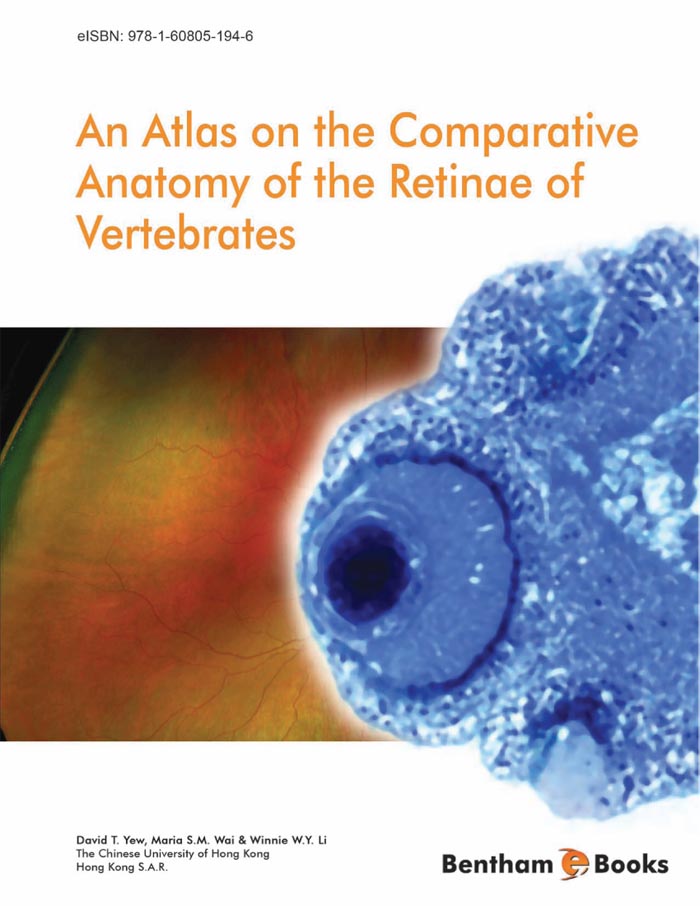In the last century, two exhaustive and interesting books have been published on the retina, Walls's (1942) 'The vertebrate eye and its adaptive radiation' and Polyak's (1941) 'The retina'. These two volumes of world famous literature on the eyes have stimulated the thoughts of numerous vision researchers across the globe. With the establishment of national funding agencies in eye research around the world, the 20th century has been the most productive era of eye research, with many excellent papers published in the field, including those on the comparative anatomy of the eye. In spite of these advances, comparative atlases on the vertebrate retina, a region of the eye which is mostly explored in research, remains lacking. This atlas tries to amend some of these problems. In this volume, the authors have attempted to enlist as many as 27 specimens of different animals as well as human. All figures in the book are micrographs, either light microscopic or electron microscopic figures. For the latter, both transmission and scanning electron micrographs are included. These figures can amend information illustrated in both Walls's and Polyak's books which contained mainly hand drawn figures. This book here is divided into several chapters – with a longest chapter on the comparison between the retinas of different vertebrates. It starts with the fish retina all the way to the primate. To those interested in comparing ontogeny with phylogeny, observation of, for example, the oil droplets in the eyes of different vertebrates may be intriguing, as oil droplets in the retina are seen in the oldest fish – the sturgeon.
Comparison between different mammals – cows, pigs, dogs, cats, and monkeys give a possibility of looking at these mammals of different habitat and diet. To us, the authors, we found the cat and the monkey to be most interesting. The layers of the retinas, on the other hand, display different patterns between the fish and the mammals and are worth noting. This atlas also has other chapters on the inner layers of the retina (exclusive of the visual cells or photoreceptor cells) and discusses inner retinal layers from their morphogenesis to maturation. There are further chapters to illustrate the development of the retina in general and examples of retinal degeneration. In the acquisition of all these different specimens, especially for the rarer one (crocodiles, humans etc.), the fixation may not always be optimal due to time lapse in securing the specimens. The authors of this atlas also have a special interest in the types of visual cells and, therefore these cells may receive more coverage than others.
The book aims to at least give an introduction to the ophthalmologists, zoologists, comparative anatomists, evolutionary biologists, embryologists and vision researchers, to trigger their interest in the retina in general or in specific species. The atlas, like all others, is not meant to be exhaustive. It is hoped that a basic knowledge on the comparative retinal structures presented here would lead to further scientific enquiries and discoveries by others.
The corresponding author of this atlas, David. T. Yew would like to dedicate this work to Professor David Bernard Meyer who introduced him to the beauty of the retina many decades ago, to the late Professors Roger Warwick (author of Gray's Anatomy) and late Professor Ronald Fearnhead for their help and encouragement during periods of difficulties, to Professors M.C. Yu and Amy Yu and Professor David Randall for their everlasting friendship and unfailing support for the past twenty years.
In the course of preparation of the book, Mr. Wai-Man Chan and Miss Lai-Yin Yeung had offered much assistance and comments in the draft of the manuscript. Without their help, the completion of the book would be impossible. We are also much indebted to Dr. Bushra Siddiqui and the staff in the very detail editing of the book.

